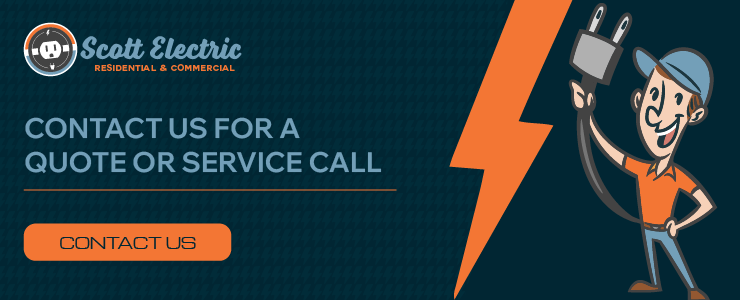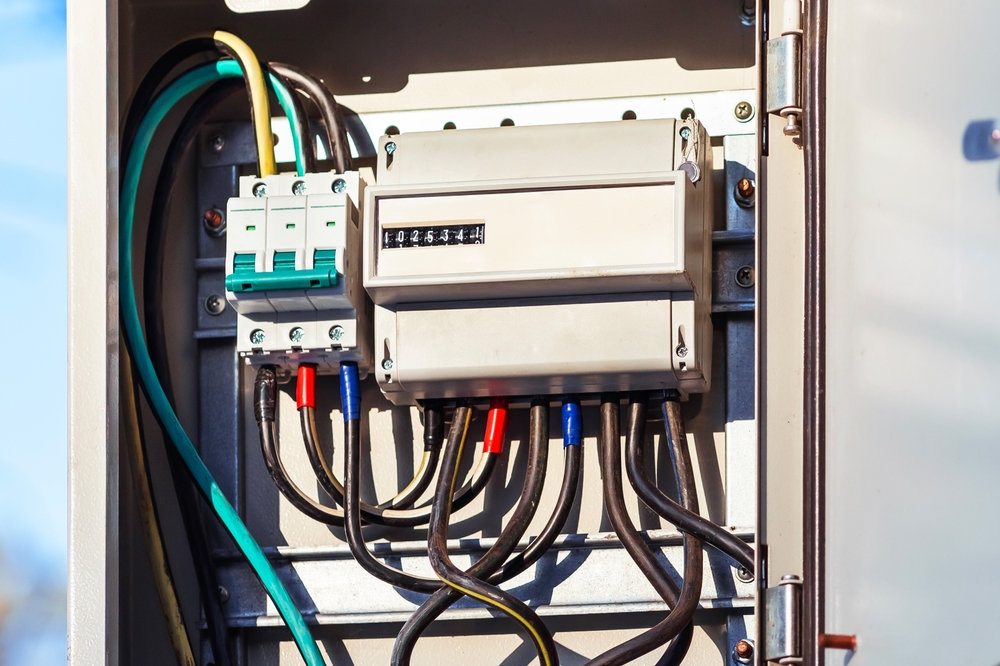Your home’s electrical panel is the command center of your entire electrical system, yet it’s often the most overlooked part of a house. For homeowners, DIY enthusiasts, and anyone safety-conscious, understanding this vital component is essential. The electrical panel powers your home, protects your family, and keeps things running safely.
This guide will explain what your electrical panel does, how it’s structured, when it may need upgrades, and how to keep it functioning safely. At Scott Electric, we’re passionate about empowering homeowners with knowledge so they can make informed decisions and keep their homes safe and efficient.
What Is an Electrical Panel?
An electrical panel, often called a breaker box or load center, is the heart of your home’s electrical system. It connects your house to the power grid and distributes electricity to various circuits that power everything from your lighting and appliances to your HVAC system.
Think of it as a distribution hub. It doesn’t just deliver power; it also acts as a safety mechanism by detecting and preventing electrical overloads or short circuits. Despite its importance, it often remains hidden in basements, garages, or utility rooms, quietly working behind the scenes.
How Your Electrical Panel Is Structured
To understand how it works, it helps to know the key components of your panel:
Main Breaker
The main breaker is the largest switch within the panel, usually positioned at the top. It controls the entire power supply to your home and serves as the primary emergency shut-off. Its amperage rating, commonly 100, 150, or 200 amps, reflects the maximum electrical load your home’s system can handle.
Circuit Breakers
These smaller switches protect individual circuits in your house. If a circuit becomes overloaded, the breaker “trips” and shuts off power, preventing overheating or electrical fires. Each breaker should be labeled to indicate what area of the house or appliance it serves.
Directory and Labels
Inside the door of the panel, you’ll find a label directory. Proper labeling tells you exactly what each breaker controls. This isn’t just a convenience feature; it’s a safety-critical tool. Accurate labels allow you to quickly disable specific circuits during upgrades, repairs, or emergencies.
Bus Bars
Bus bars are the metal strips inside the panel that distribute electricity from the main breaker to individual circuits. These bars are engineered to handle a specific maximum amperage and are crucial to the overall safety of the panel.
Decoding Your Panel’s Capacity
Your panel’s capacity, measured in amps, determines how much electricity it can handle. Modern homes typically feature breaker panels with 100-amp, 150-amp, or 200-amp capacity.
How to Find Your Panel’s Capacity
- Check the Main Breaker: Its number reveals your service size.
- Inspect the Label: Look for a label on the inside of the panel door.
- Panel Nameplate: Find the manufacturer’s nameplate, usually located inside, to check the capacity rating.
Signs That You’re Overloading Your Panel
- Frequent tripped breakers
- Flickering or dimmed lights when appliances switch on
- Over-reliance on power strips or extension cords
- Warm outlets and switch plates
- A burning smell near the panel
If you notice these signs, you’re likely meeting or exceeding your panel’s capacity and may need an upgrade.
Understanding Panel Types and Age
The type and age of your electrical panel can dictate its safety and functionality. Older homes are often equipped with outdated panel systems that weren’t built for today’s electrical demands.
Fuse Boxes vs. Circuit Breakers
Homes built before the 1960s may still have fuse boxes instead of circuit breaker panels. While functional, fuses blow out during overloads and must be replaced, making them less convenient and potentially unsafe for modern demands. They also typically max out at 60 amps, far below modern requirements.
Obsolete Panel Brands
Some older panels pose significant safety risks:
- Federal Pacific Electric (FPE) panels with Stab-Lok breakers
- Zinsco panels, which may not trip properly during overloads
- Challenger panels
- Split-bus Panels, missing a main breaker
If your home has one of these, an upgrade isn’t just a nice addition but a necessity.
When to Upgrade Your Electrical Panel
Upgrading your electrical panel isn’t just about safety; it’s also about efficiency, convenience, and future-proofing your home. Here’s when to consider an upgrade:
Safety Concerns
- Visible rust, corrosion, or water damage
- Breakers that fail to trip during overloads
- Buzzing, crackling, or burning odors
- Outdated or hazard-prone brands like FPE or Zinsco
Increased Capacity for Modern Living
Upgrading becomes essential if you’re:
- Adding high-demand appliances or systems (like EV chargers or hot tubs)
- Renovating or expanding your home
- Routinely tripping breakers or experiencing other signs of overload
- Transitioning to alternative energy systems like solar panels or battery storage
- Currently limited to less than 100-amp service
Financial Benefits of an Upgrade
- Improved home value
- Potential insurance premium reductions
- Easier resale process, as outdated panels may deter buyers
- Avoiding potential insurance denial due to unsafe panels
What to Expect During an Upgrade
A professional electrical panel upgrade involves several steps:
- Permit acquisition
- A temporary outage (typically 4-8 hours)
- Replacing the panel and, if necessary, service line upgrades
- Transferring circuits with proper labeling
- Inspection by local officials
- Utility reconnection
DIY vs. Professional Maintenance
It’s tempting for DIY enthusiasts to tackle everything, but electrical panel work should mostly be left to licensed professionals.
Safe DIY Tasks
- Reset tripped breakers
- Maintain accurate panel labels
- Keep the area around the panel clear
- Inspect for obvious signs of damage
Tasks Best Left to the Pros
- Circuit additions or replacements
- Breaker replacements
- Upgrading panel capacity
- Resolving any wiring issues
Trusting a professional for complex electrical needs ensures proper code compliance and safety.
Make the Right Call
Your electrical panel is more than a box hidden in the garage; it’s a vital component of your home’s safety and efficiency. Whether you’re troubleshooting tripping breakers, considering an upgrade, or simply maintaining a safe home, regular attention to your panel is vital.
At Scott Electric, we recommend having your panel inspected by a licensed professional every 3-5 years. If your system is outdated or showing any signs of trouble, now is the time to act. Our team ensures every panel install or upgrade meets the latest safety standards, giving your home the reliable energy distribution it deserves.
Need a reliable electrician to inspect or upgrade your panel? Contact Scott Electric today for expert advice and services!


